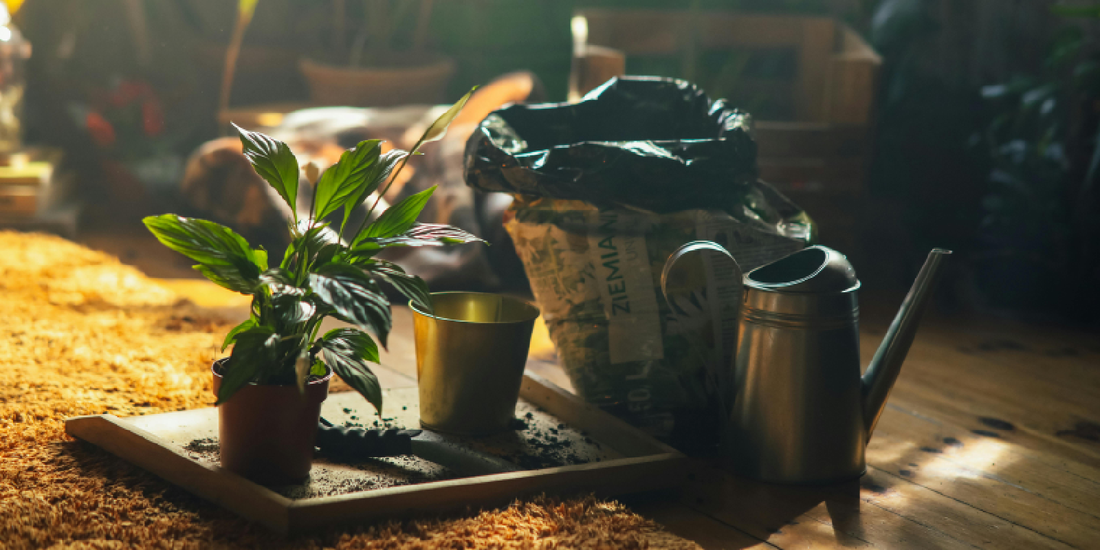
Mastering Grow Light Usage for Indoor Plants
Share
Indoor gardening has opened up new possibilities for plant lovers, city dwellers, and those without access to natural sunlight. Whether you’re growing herbs, houseplants, or flowering species, using grow lights correctly can mean the difference between struggling plants and a thriving indoor oasis.
In this guide, we’ll explore the essentials of grow light usage, from choosing the right setup to adjusting schedules based on plant types. We’ll also highlight how the amoyls VerdantGlow S-Shaped 8-Tier Plant Shelf with Grow Lights offers both functionality and design elegance for modern indoor gardeners.
Why Grow Lights Are Essential Indoors
Natural light is the most reliable energy source for plants, but not everyone has a sunny balcony, garden, or south-facing window. Indoor environments often lack sufficient light intensity or duration, especially in apartments or during winter.
Grow lights solve this by:
- Providing full-spectrum light similar to sunlight.
- Extending daylight hours during darker seasons.
- Supporting photosynthesis, the process by which plants convert light into energy.
- Ensuring year-round plant growth regardless of outdoor conditions.
For indoor plant lovers, grow lights aren’t a luxury—they’re a necessity.
Understanding Types of Grow Lights
Before diving into how to use them, it’s important to understand the different grow light technologies available:
1. LED Grow Lights
Energy-efficient, long-lasting, and cool to the touch. Most modern indoor gardeners prefer LEDs because they provide full-spectrum lighting tailored to plant needs.
2. Fluorescent Lights
Compact fluorescent lamps (CFLs) or T5 tubes are affordable and suitable for small setups. However, they are less efficient compared to LEDs.
3. Incandescent Lights
Rarely used today because they generate excessive heat and waste energy.
4. HID Lights (High-Intensity Discharge)
Powerful and effective but better suited for large-scale or professional grow operations.
The amoyls VerdantGlow Shelf uses integrated LED grow lights, combining efficiency, low energy consumption, and ideal light output for indoor plants.
How Long Should Grow Lights Stay On?
The number of hours plants need under grow lights varies by species:
- Leafy Greens & Herbs: 12–16 hours daily.
- Flowering Plants: 14–18 hours during the growth stage, then 12 hours to trigger blooming.
- Succulents & Cacti: 10–12 hours daily.
- Houseplants (Tropical): 8–12 hours daily.
👉 Tip: Plants also need darkness to rest. Avoid 24/7 lighting, as this can stress plants and stunt growth.
Positioning Grow Lights Correctly
Lighting duration is only half the equation; placement matters too.
- Distance from Plants:
- LEDs: 12–24 inches above the canopy.
- Fluorescents: 6–12 inches above plants.
- Angle of Light: Position lights directly overhead for uniform growth.
- Coverage: Ensure all tiers or shelves receive balanced illumination.
With the amoyls VerdantGlow 8-Tier Shelf, the vertical S-shaped design ensures even distribution, minimizing shading between plants on different levels.
Signs of Too Much or Too Little Light
Even with the best setup, observation is key:
- Too Much Light: Brown leaf edges, scorched tips, faded colors.
- Too Little Light: Yellowing leaves, leggy stems, slow growth.
Adjust lighting hours or height accordingly.
Best Practices for Using Grow Lights
- Consistency is Key – Stick to a daily routine. Even manual on/off control should mimic natural light cycles.
- Monitor Plant Growth – Each plant species reacts differently. Adjust based on results.
- Combine with Natural Light – If you have a bright window, supplement rather than replace.
- Keep Lights Clean – Dust and dirt reduce light intensity.
- Rotate Plants – Ensure all sides receive equal exposure.
Case Study: amoyls VerdantGlow Shelf
The amoyls VerdantGlow S-Shaped 8-Tier Plant Shelf with Grow Lights is designed for plant enthusiasts who value both practicality and aesthetics.
- S-Shaped Layout: Enhances airflow and light distribution.
- Integrated LED Grow Lights: Built for indoor use with ideal wavelengths for photosynthesis.
- 8-Tier Design: Perfect for displaying multiple plants in a compact space.
- Modern Style: Complements home interiors while supporting plant growth.
Unlike standalone grow lights, this shelf creates a ready-to-use plant care ecosystem. Simply plug it in, arrange your plants, and adjust your daily light routine.
Practical Daily Routine Example
Here’s a sample lighting schedule for a mix of houseplants and herbs:
- 8:00 AM – Turn on grow lights.
- 12:00 PM – Plants enjoy additional natural light from nearby windows.
- 8:00 PM – Switch off grow lights to allow rest.
👉 This 12-hour cycle supports healthy growth while mimicking daylight exposure.
Challenges Without Automation
While automation tools (like timers or smart plugs) can simplify plant care, many gardeners prefer hands-on involvement. Manually controlling grow lights has benefits:
- Encourages daily interaction with plants.
- Allows flexible adjustments for seasonal changes.
- Helps you spot early signs of stress or disease.
If you enjoy nurturing plants actively, sticking with manual grow light control can be just as effective—provided you stay consistent.
Future of Indoor Gardening
As technology advances, grow lights will continue to improve in efficiency and customization. For now, the combination of LED lighting, thoughtful placement, and consistent daily routines can give your indoor plants the support they need to flourish.
Whether you’re cultivating herbs for the kitchen or creating a green corner in your apartment, mastering grow light usage ensures your plants thrive year-round.
Conclusion
Using grow lights effectively doesn’t require automation or complicated setups. By understanding plant needs, setting proper schedules, and observing growth responses, you can create a flourishing indoor garden.
The amoyls VerdantGlow S-Shaped 8-Tier Plant Shelf with Grow Lights makes the process even easier, offering a stylish and functional platform to showcase and nurture your plants. With the right approach, your indoor garden can become both a thriving ecosystem and a beautiful centerpiece of your home.
